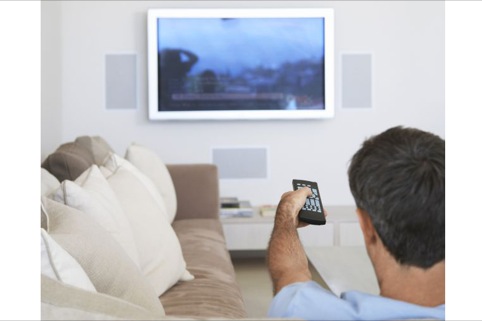
TV viewers’ engagement with interactive applications through the use of remote control buttons has been examined in a recent market research study by ADB. The representative research was carried out in Poland by a local firm (OBOAK) among 350 viewers.
The survey also showed how an average Polish person uses TV set in general: 99 per cent of respondents watch TV channels; 87 per cent use EPG; 21 per cent use YouTube; 15 per cent record with DVR or USB; but e-banking or browsing internet sites is still very rare – only 4 per cent.
The average Polish TV viewer uses only seven buttons of the remote control regardless if it’s a TV set or a set-top box, the study found. As many as four out of five TV users know and utilise only seven buttons on their remotes without not knowing what the other 40, 50 or 60 do. In spite of an ever increasing number of customised options and new applications of traditional remote control buttons respondents still favour: channel up/down, volume control up/down, source input, enter or ok button confirming choice and the power button. It seems that if the industry wants to compete with other digital devices at home, developers need to find a way to navigate predominantly with these seven buttons.
“The viewers have to deal with hundreds of applications, advanced functions and personalised settings, which are perceived to be important by content deliverers but are considered too complex and impractical for average viewers”, explained Gerald Wood, CMO at ADB.
Older generations use TV sets primarily for watching television, with no added value features, the study concluded. For these respondents the most important TV set functionality is the number of channels and quality of video. Smart TV functions, like DVR, VoD or multi-room/multi-screen is still an abstraction.
Younger viewers often use a TV set just to connect to an Xbox, PlayStation or computer and use it as a large screen, without bothering with advanced TV functionality. For them, what matters is the quality of the picture, matrix reaction speed and the quality of sound, ADB reported.
One of the challenge for constructors, engineers and developers of TV technologies, remains navigation ergonomics and ease of searching through multiple TV and set-top box functions. The remote is not a device invented primarily to browse the web, search movies, switching off adverts or typing words into search engines. Companies need to focus on adapting this centerpiece to the ease-of-use needs of the end-user.
“Simplicity and navigation ergonomics are the most important and sought after features when designing modern interface architecture,” said Wojciech Doganowski, VP, new product initiative, ADB. “It’s the first impression that counts and if the user doesn’t find a way to navigate the application he will most probably abandon it forever.”







